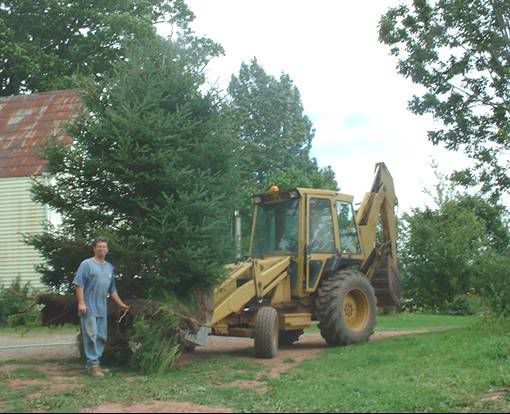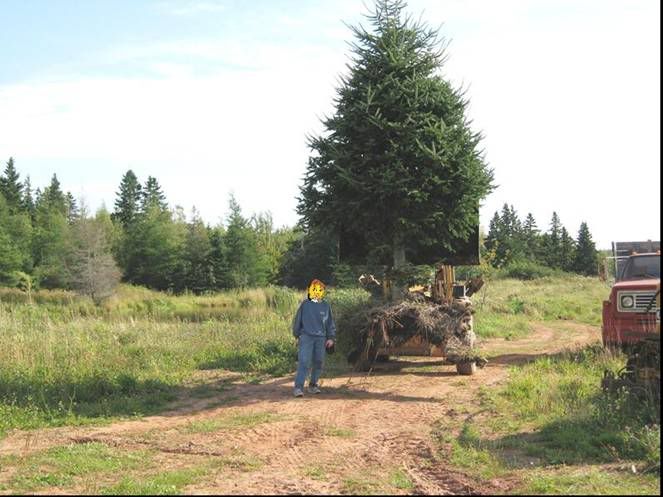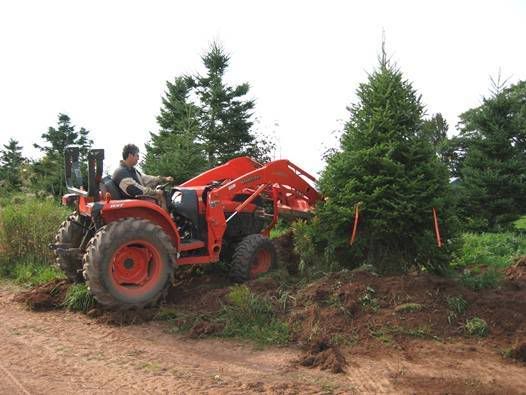I have transplanted hundred of trees on my property with only about 10% mortality rate. Some of the spruce have been up to 24' high and 12"dia but the most common size has been 6-10 footers.
Mind you I have a pretty large TLB to do it with but what I have learned over the years I have adapted to use with my small Kubota.
As previously asked, what type of Pine is it, whats you soil like, and are the trees healthy. Clay good, sandy bad, rocks worse.
Time of year will be VERY important when transplanting any conifer rather than a deciduous tree. I ALWAYS transplant in late September to end of October just before the late fall rains and freeze up and when the tree is shutting down for the winter.
Pines generally have a fibrous root system and the root ball tends to break apart when attempting to move it. A tree spade would be the safest but depending on the species you can do it if you are carefully and don't mind babysitting it for the first two years.
When I move pines I usually try to take as much of the root-ball and native soil I can but there is a proven (works for me) that I always use no mater what type of conifer I move. (deciduous I use a different method )
The soil conditions must be right for this process to work best. Solid should be moist (definitely not dry) maybe a day after a good rain so the surface is dry but the soil is still easy to cut through.
1) Cut the roots with the front bucket about 36" from the trunk on the back side of the tree and about 30" on both sides.
2) Tie up the bottom branches on the front of the tree.
3) insert your bucket about 24" from the trunk on a 45 degree angle, cut in until cutting edge is about 12" deep, curl while moving ahead slowly until bucket almost straight, and without stopping push ahead until you lose traction.
4) hopefully your cutting edge is now slightly under the the base of the trunk.
5) Curl slightly while lifting the bucket moving forward again until the tree starts tipping over slightly.
6) Put a good old cotton towel or same around bottom of trunk just below the first set of branches, triple wrap a 2" cargo strap around the trunk and towel and tie off, wrap the other end around your center grab hook on your bucket and tighten.
7) Important step, move ahead slowly while lifting until the tree is about 6" out of the ground. Might have to curl slightly to take up the stretch on the cargo strap just to keep it semi straight.
8) Jump off and take you tree loper bypass cutters and find as many of the roots still attached around the edges and cut them. Lift a bit more and repeat until you can see completely under the tree. Don't worry about losing the soil around the perimeter, just save as many small roots as possible from being damaged.
9) SLOWLY CREEP to you already prepared hole dug 12-16" deep and 6'X6' with spoil piled close to backfill your tree.
10) Water in well 45gal, and it in windy location stake with 4 stakes at the 5' level for the first season and remove after the start of the second season.
And like always, this works for me, use common sense, dont do anything that could be dangorus, I am not held liable, etc. Lovely world we live in.
I was going to take some pictures of each step and post it this fall. I have sucsefully transplanted 34' ash using my backhoe. Who said a hoe will kill a tree? Not doing it right.
Whew. Honest, they all call me the "Tree Guy" around my property. Doesn't hurt that I have a tree nursery as well.


